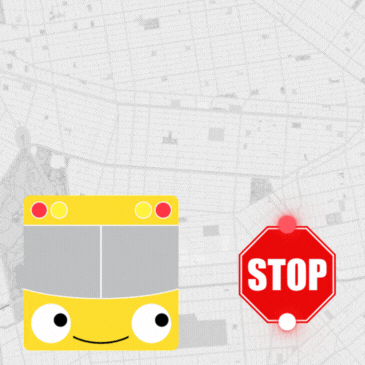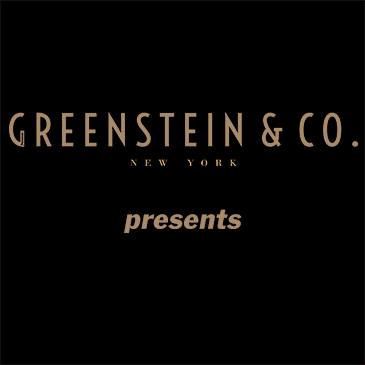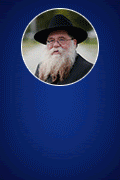
Spiritual, Organic Jewish Living in Bat Ayin
Rachel Fragin’s recollections of growing up Jewish in Leningrad are interrupted by bleating from her 15 goats which supply her family and neighbors with organic goat milk, yogurt, cheese.
When she immigrated to Israel about 20 years ago she hunted for a community that would be idealistic and allow her to try organic farming. She found Bat Ayin.
The road to Bat Ayin, about an hour out of Jerusalem, is carved into curvaceous hills. Getting there requires a stop at a checkpoint for a once-over from a young IDF soldier. The road winds alongside scrubby pines and boulders ranging from blonde to terracotta jut through the dry grass.
Another checkpoint stands about 20 yards away from the one that guards the entrance to Gush Etzion—the area south of Jerusalem in southern Judea, where some 70,000 Jews live in about 22 distinct settlements.
Bat Ayin, on the edge of the Judean hills, is populated by scholars, artists, writers, musicians, farmers, and doctors. Chabad representatives Rabbi Ramiel and Sylvia Maor were one of Bat Ayin’s founders, twenty years ago.
Originally conceived as a village that would sustain itself through agriculture, today’s Bat Ayin householders maintain home gardens or mini-flocks like Fragin and leave the village by day to earn a living.
Residents estimate that 90 to 95 percent of Bat Ayin’s community is made up of people raised in secular homes who adopted a religiously observant lifestyle as adults. Many are immigrants from English speaking countries.
“People here are spiritual. They are searching,” said Naama Berkey, a local artist, whose daughter is in Mrs. Maor’s kindergarten class at the village school. “I see depth and beauty in their faces.”
In other parts of the world, Chabad serves as a starting point for Jews interested in deepening their commitment to mitzvot. In Bat Ayin, Chabad reaches families who have made that leap and helps them answer the question, “Now what?”
A turbulent childhood took Raizy Itzkowitz, a social worker known for her lush sketches, from Brooklyn to Florida and then Georgia. She and husband Avraham made Bat Ayin their home 10 years ago with the thought that their lives would be guided by Chababkuk, a combination of spiritual philosophies from the Chasidic teachings of Chabad and Breslov and the religious Zionist ideology of Rabbi Avraham Kook. That changed when they started a family.
“When we had kids, we knew we had to settle down, choose one way so the kids would not be confused.” She attends Mrs. Maor’s Tuesday night class and a class in Chasidic texts given by Miriam Rhodes, a well known mentor and spiritual guide. “I feel close to Chabad more and more. It feels right to me.”
The Maors understand where community members like Mrs. Itzkowitz are coming from, having traveled the road to Chabad themselves. Rabbi Maor was serving in Israel’s Navy when he started to study and observe Torah with greater intensity and went on to study in Chabad yeshivot. Mrs. Maor was raised in Jerusalem and attended a Chabad-run high school and seminary.
“We honor each path, but we do not offer a mix,” said Rabbi Maor. “We are Chabadniks committed to spreading the teachings of the Lubavitcher Rebbe.”
Twelve years ago, the Maors received the go ahead to make their informal holiday programs and Torah classes an official Chabad center branch. They turned their three bedroom home into a Chabad house and bought another property for themselves and their 13 children. The center, which has views of Jerusalem and the Mediterranean on a clear day, retains a homey quality.
Couches fill in for the synagogue’s back bench. More than 50 people join Chabad for Shabbat services. A covered overhang built last year helps accommodate some of the overflow. The Maors would like to expand but do not have the funds to do it, nor do community members. Israeli salaries, even with simple living, do not leave much money for extras.
The Maors fill their days teaching adults and hosting weekly Chasidic gatherings, farbrengens, but reserve the bulk of their time for children’s programs.
“We do a lot of work to strengthen the children,” said Mrs. Maor. That means they work to address the challenges religious novices encounter as they work to imbue their children with traditional Jewish values, often considerably different from the ones they grew up with. Chabad of Bat Ayin hosts Friday night children’s services, “Bat Melech” weekly club gatherings for Jewish girls, Saturday afternoon Shabbat parties, and holiday events all year long. Their most recent event, a Lag B’Omer parade, rally and raffle, drew a crowd of 350 children.
Ariella Ruderman attended the Lag B’Omer festivities with two-month-old Rivka cradled in her arms. Mrs. Ruderman discovered Chabad philosophy in Santa Monica, CA, studied at Bat Ayin’s seminary, and led the Jewish Learning Initiative with husband Rabbi David Ruderman at the University of Massachusetts, Amherst. Last year, she and her family moved to Israel. Coming from Amherst where the religious Jewish community is small and close, Mrs. Ruderman has become more involved with Chabad because it offers a similar sense of interconnectedness. After baby Rivka’s birth, “it was nice to have a life cycle event with people who know who you are,” Mrs. Ruderman said.
The sense of belonging in Bat Ayin has a fragile feel to it. When powerbrokers discuss redrawing the map of Israel to exclude portions settled after 1967, they are actually talking about dismantling villages like Bat Ayin. Despite or because of this, Bat Ayin is growing. An offshoot of the village, Bat Ayin Bet, is now home to over 20 families. Mrs. Fragin is building a second story on her house for her married daughter and her family.
“The people here feel very strongly that this land is ours and we should not give it away,” said Mrs. Maor. She pauses. She looks over the throng of stroller parked in the community building lobby, gives way for a knot of boys wearing a rainbow of cereal-bowl sized knitted kipas to exit. “We are expecting Moshiach.















yida
thats such an awesome way to live. You get to exercise real jewish values like that. Stunning, sounds amazing, wow.
meir rhodes
miriam and i have been members of bat ayin for 14 years. we’ve had thousans of kids from all over the world in our home for shabbos. i run a kolel here. we also represent lubvitch. your snub of our bet lubavitch and of our activities leaves me dismayed and miffed. next time your here visit us as well.
Genug shoyn
Bat Ayin is an insane asylum. Enough of this New Age nonsense repackaged as Chabad.
Giraffe
@#2
I never been to Bat Ayin but friends of mine have and when I hear Bat Ayin I think of the rhodes
perek lamed beis tanya
GENUG SHOYN..
fact is chabad is repackaged new age… why do you think the misnagdim hated us so much.. be real about what we are.. the current crown heights clsoed minded version was not what was intended.. hisboinenus is pretty freaky stuff.. oh wiat thats what the tanya is all about..
Astonished!
How can you do an article about Bat Ayin without mentioning Meir and Miriam Rhodes!!!!
PRIVILEDGED TO HAVE SEEN IT FIRST HAND
I AGREE WITH #2!! ALTHOUGH I’M SURE IT WAS AN OVERSIGHT, YOU COULD WRITE AN ENTIRE BOOK ON MEIR & MIRIAM AND THEIR EXTRAORDINARY HACHNOSSES ORCHIM ( BOTH IN CH AND NOW IN BAT AYIN ). MANY OF THEIR GUESTS ARE OUR OWN CHILDREN WHO ARE B“H ”RE-INSPIRED” IN THEIR YIDDISHKEIT AS A RESULT OF RECEIVING THE RHODES’ UNCONDITIONAL LOVE – AND YUMMY HOLY CHALLAH. I AM ANXIOUSLY WAITING FOR ANOTHER BAT AYIN ARTICLE HIGHLIGHTING THESE TWO AMAZING JEWS .
meir rhodes
thanks for your positive comments.
bat ayin is far from “new age”. our chevra from russia make up a strong part of our lubavitch community. we’re traditional lubavitchers. the rest of the community consists of new b.ts who are connected to breslov.you might consider these chevra new age until you daven with them.then you experience chassidic davening. the community also has a strong sephardic community who’s mashpia formerly taught in kfar chabad and was a mashpia to many crown heights younger lite.
i think the most impressive part of our bat ayin is the willingness of so many young couples to come to the top of this hill ,without fences, with their children and to live a life of sacrifice and danger because they love g-d so much. if this is “new age” then count me in.
Raizy Gersh
Correction: Raizy Iskowitz is an artist, Not a social worker.